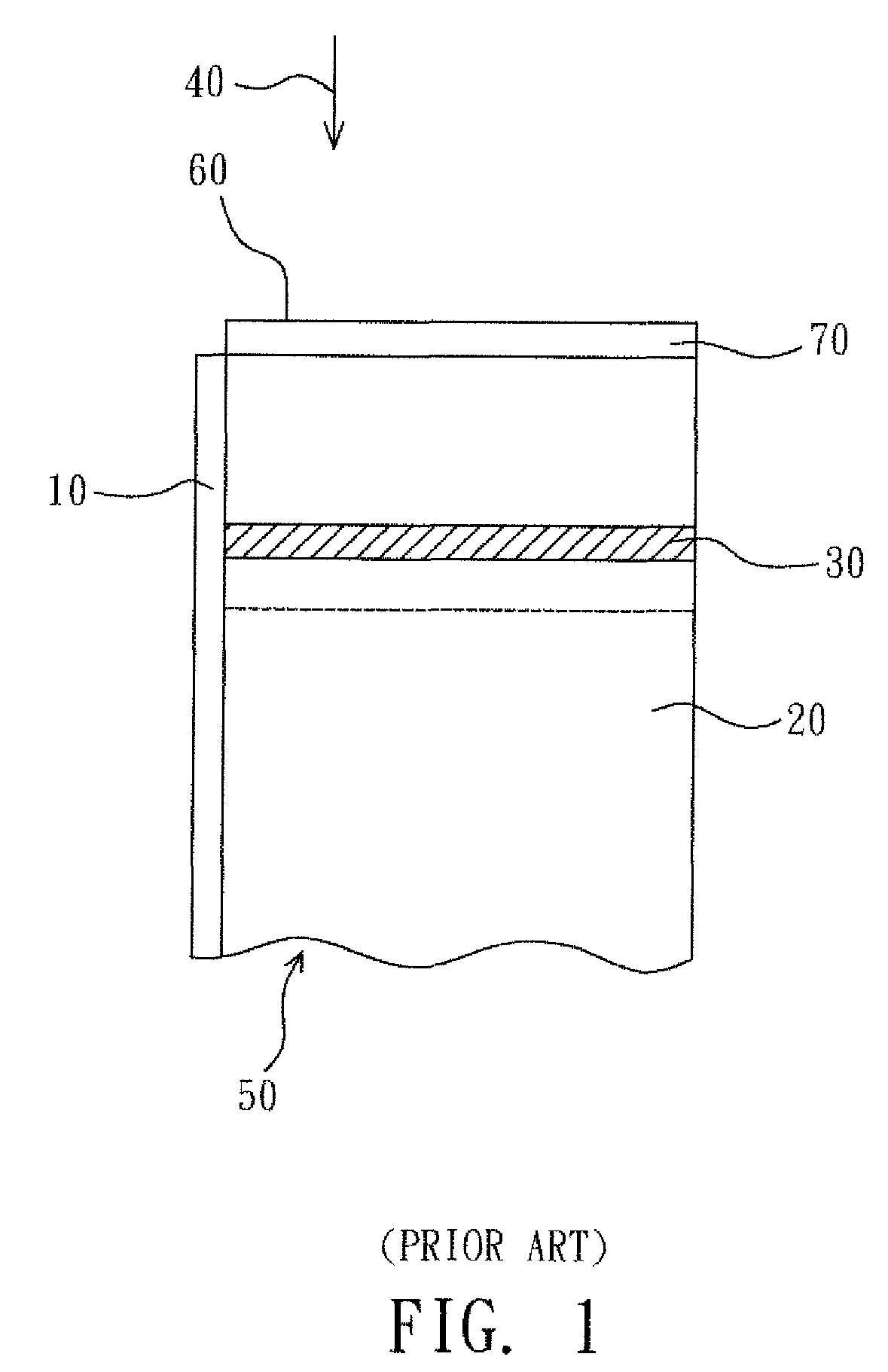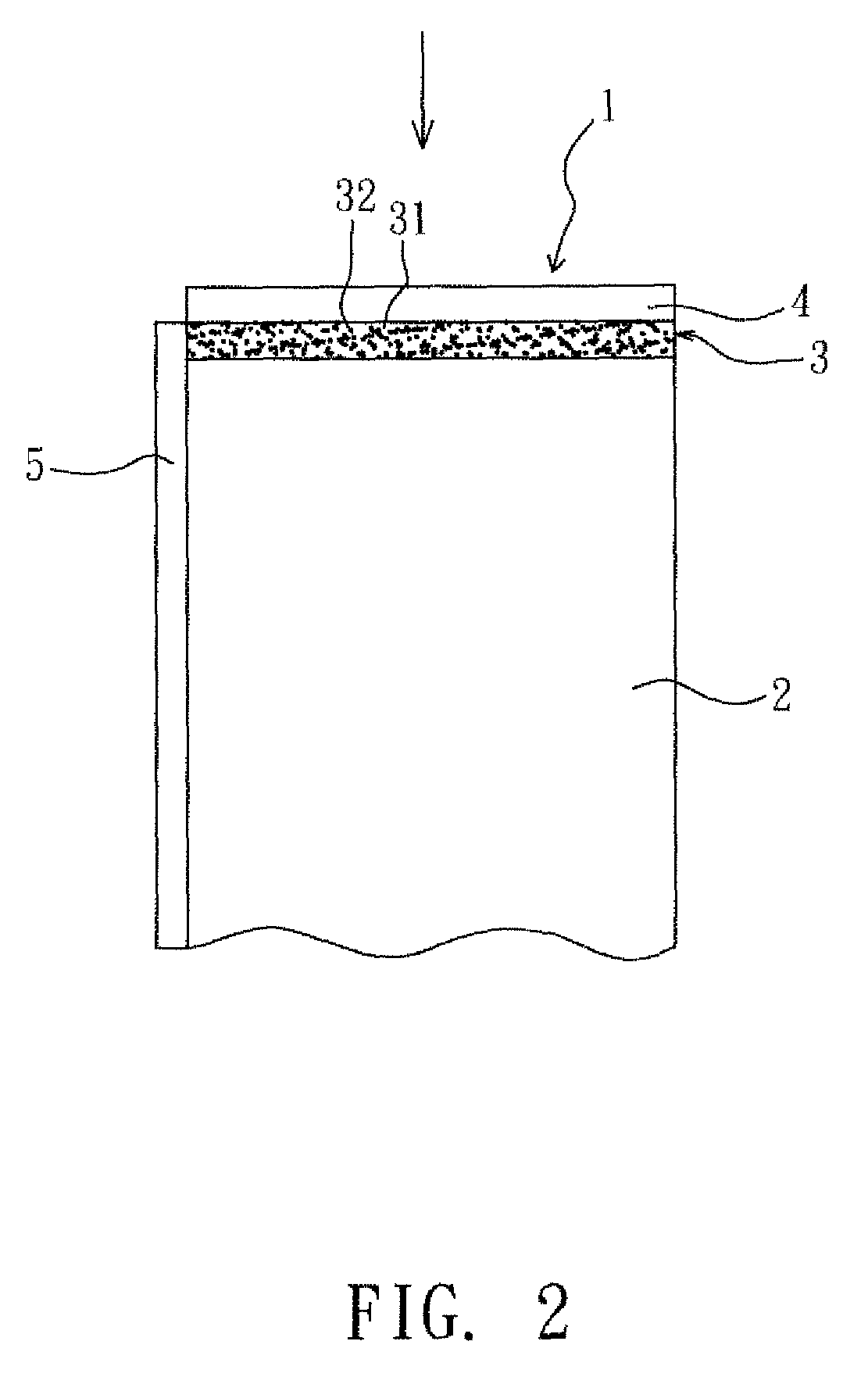Silicon-based photovoltaic cell and its red light conversion layer
a photovoltaic cell and silicon-based technology, applied in the field of energy technology, can solve the problems of undoubtly high realistic value and high efficiency of silicon-based photovoltaic cells, and achieve the effect of increasing the effective utilization of solar radiation
- Summary
- Abstract
- Description
- Claims
- Application Information
AI Technical Summary
Benefits of technology
Problems solved by technology
Method used
Image
Examples
Embodiment Construction
[0039]At first, the object of the present invention is to eliminate the drawbacks of the aforesaid prior art silicon-based photovoltaic cell. In FIG. 2, to achieve this object, a silicon-based photovoltaic cell 1 in accordance with the present invention is shown comprising a silicon substrate 2, a glass 4 covered on the silicon substrate 2, and a conversion layer 3 sandwiched between the silicon substrate 2 and the glass 4, characterized in that the conversion layer 3 absorbs ultraviolet rays, blue-purple or yellow-green light of the Sun's solar radiation and converts the absorption into a photoluminescent light, and is capable of absorbing the maximum value of the Sun's solar radiation so that the maximum value of the photoluminescent spectrum of the conversion layer 3 is within the photosensitive spectral zone of the single crystal silicon;
[0040]wherein the glass 4 can be a decolorized frontal glass;
[0041]wherein the photoluminescent light is located within the orange, red, near-i...
PUM
 Login to View More
Login to View More Abstract
Description
Claims
Application Information
 Login to View More
Login to View More - R&D
- Intellectual Property
- Life Sciences
- Materials
- Tech Scout
- Unparalleled Data Quality
- Higher Quality Content
- 60% Fewer Hallucinations
Browse by: Latest US Patents, China's latest patents, Technical Efficacy Thesaurus, Application Domain, Technology Topic, Popular Technical Reports.
© 2025 PatSnap. All rights reserved.Legal|Privacy policy|Modern Slavery Act Transparency Statement|Sitemap|About US| Contact US: help@patsnap.com



